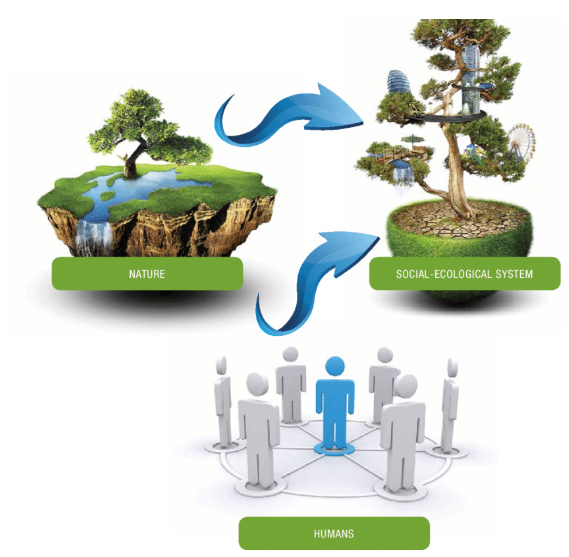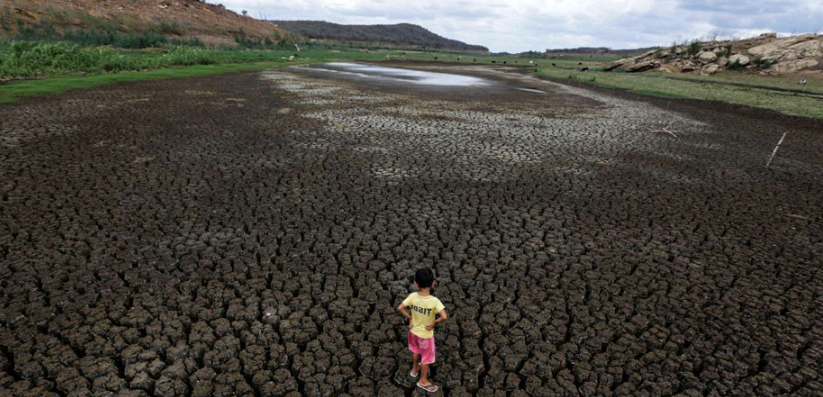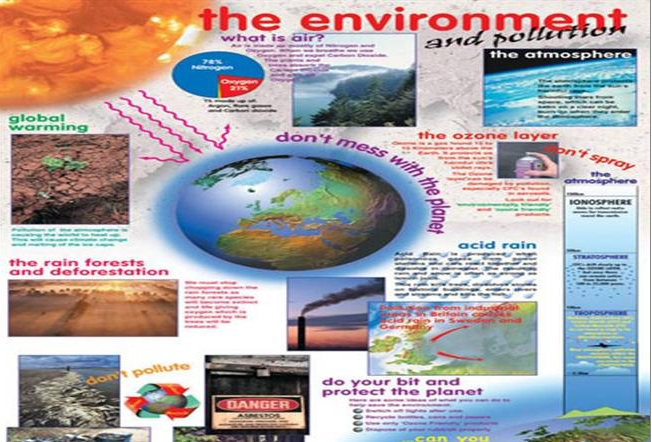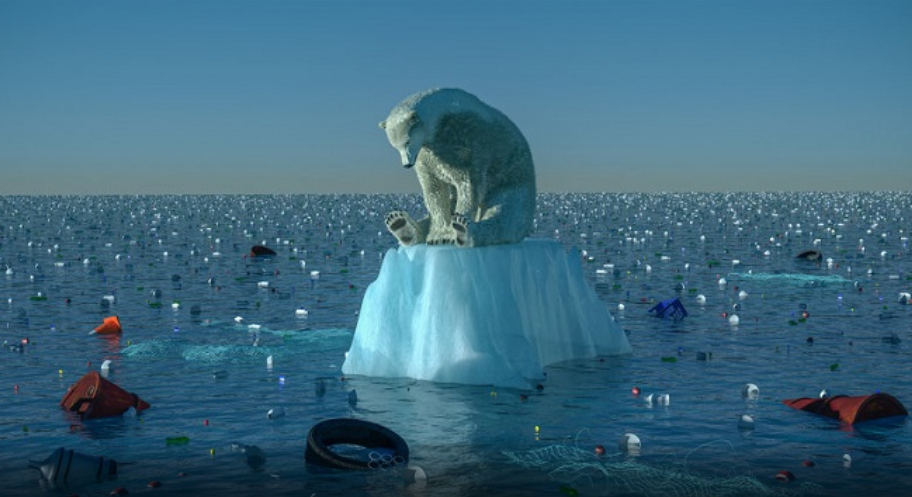CHAPTER 1
History of Environmental Pollution
1İbrahim ÖRÜN1 &2Belda ERKMEN
1Prof. Dr., Aksaray University, Faculty of Science and Letters, Department of Biology, iorun@aksaray.edu.tr,
2Assoc. Prof. Dr. Aksaray University, Faculty of Science and Letters, Department of Biology, berkmen@aksaray.edu.tr,
Contents
1. Introduction
Human effects have been harmful to the environment in every period from the first human to the present day. This harmful effect is known to increase even more with the industrial revolution. The damage caused to the environment as a result of human effects has reached threatening lives of humans and all living things in recent years. Environmental problems have been increasing for the last 50-60 years and are considered as the most important agenda item. From the beginning of the 21st century, it would not be wrong to say that human beings are facing environmental problems that they have not seen before. Pollution and exhaustion of natural resources on earth such as air, water and soil threaten the continuity of life.
Despite great efforts to clean the environment in recent years, pollution remains a major problem and poses a constant risk to health. Problems, industrial emissions, poor sanitation, inadequate waste management, polluted water sources and exposure to indoor air pollution from biomass fuels are undoubtedly the largest in developing countries, where many people are affected.
The threat of past, present and potential global environmental pollution and degradation is one of the main factors affecting the environmental formation of the society. Environmental pollution and degradation can be caused by chemical substances, physical factors, or the development of undesirable living organisms. Pollutant is any substance released into the environment as a result of natural processes that have a negative impact on human activity or living organisms. Environmental deterioration means that the environment becomes unusable for the purposes for which it was designed, or the development of living organisms and communities around them has been impaired.
Figure 1. Environmental pollution from the first human to today (URL-1)

Environmental pollution has reached threatening levels all over the world. Greenhouse gas emissions and acid accumulation, water pollution, waste management, including global environmental pollution, social, economic, legislation, and lifestyle habits that help improve health, including environmental engineering systems, and strengthen environmental systems against contamination is recognized as an international public health problem that needs to be investigated in many respects. Environmental pollutants have various negative health effects from an early age. Some of the most important harmful effects are cardiovascular system, respiratory and neurological system problems, infant deaths, oxidative stress, allergies and various other harmful effects. While the short-term effects of environmental pollutants are often highlighted, broad air pollution hazards from early life and their possible effects on chronic non-communicable diseases of adulthood should also be highlighted.
1.1. Early Man-Nature Relationship
Dirt, smoke, slime and mud have not always been an inclusive word for intolerant and dangerous substances that pollute our world. In 1783, Dr Johnson described the pollution as 'the act of defiling' or 'the contrary of consecration'. According to Johnson, the verb meant 'to make unclean in the religious sense' or to 'taint with guilt' (Markham, 2019). The current use of the word pollution became validity in the nineteenth century. In 1972, British biologist Kenneth Mellanby described pollution as "the presence of toxic substances introduced into the environment by human beings" (Mellanby, 1972), but it could also mean "degradation of natural soil and water regimes by natural displacement or mobilization."
Pollution is older than civilization and has been a problem since our first ancestors appeared. The mixing of physical and chemical waste products resulting from human activity into water, soil and air has been continuing since our species existed on earth. The first diseases were undoubtedly caused by what we call pollution today. The earliest form of pollution may have been caused by defecation action. The presence of human intestinal bacteria, such as Escherichia coli, in drinking water was an indicator of water pollution and a source of disease for prehistoric man as it is today. In China, where a comprehensive system for waste disposal was developed, even in ancient times, the use of human feces as fertilizer was an important element of agriculture even thousands of years ago. For this reason, pollution has been an integral part of medicine and health since prehistoric times. With the discovery of fire, humankind created the first source of significant air pollution and smoke still remains a major problem in the modern world. Burning fuels for heating and cooking contributed to indoor air pollution. It is known that the walls of the caves, which are the living space of the first people, are covered with thick soot layers. The presence of smoke in the confined space made breathing difficult as well as irritated the eyes. In the Palaeolithic age, mummified bodies have a black shade in most (but there are few of them) lungs. Smoke was not removed in the first settlements (one of the reasons may be protection against mosquitoes) and people living in these interiors were exposed to too much smoke (McNeill, 2001). Ancient people were likely to be constantly exposed to smoke, suggesting that they are confronted with sinusitis and lung anthracosis.
Figure2. Man-Nature Relationship (URL-2)

Dust pollution also has early origins. Janssen’s argued that the limestone miners of Central Europe suffered from silicosis due to carving flint stone from the limestone quarry like those in Obourg (Janssens, 1970). Sometimes exposure to pollutants has affected the course of history. In the recent analysis of the 200,000-year-old Broken Hill hominid in Zambia, evidence of lead poisoning was found due to the ore located under the water supply of the cave habitat (Hammond, 1994). The transition from hunter-gatherer to nomadic-animal husbandry systems, and ultimately to settled agriculture in the Neolithic period, was one of the most fundamental changes in human history (Ponting, 1991). The transition to settled agriculture has led to the development of the concept of ownership and an increase in food production. Food surplus has led to the development of non-farmers in the community, including priesthood, army and artisans. The collection and distribution of food was the basis of power and development. The ability to produce more in a smaller area was the basis of population growth (Markham, 2019).
Agriculture led to the growth of societies, first to small villages, then to towns and finally to cities and city-states. Although Jericho was a small town in 6500 BC, the temple city of Mesopotamia, Uruk, had a population of 50,000 in 3000 BC. If we make a modern comparison, the population of Toulouse in France was only 55,000 in 1789, approximately 5000 years later (Braudel, 1989). However, the development of towns and cities meant the beginning of the pollution era (Markham, 2019).
The harmful activities of ancient civilizations have caused long-term changes in the environment that can be seen even today. However, these effects occurred only in the relevant region without causing any global changes. Between B.C 3500 and 1800, the characteristics of the soil changed due to the floods of the Tigris and Euphrates rivers. As a result, the productivity of Sumerian agriculture gradually decreased. Water used for irrigation raises groundwater levels. If excess water is not discharged, the soil is saturated with excess water. As a result, the salts dissolve and precipitate as an impermeable layer on the surface. The agricultural area becomes unsuitable for production with the leakage of soils as a result of excessive irrigation. This contributed greatly to the weakening of the Sumerian civilization (Markham, 1994; Mészáros, 2002). This situation, which causes the Sumerian civilization to weaken and disappear, is defined as salinization and can still be seen today. Sumerians, who invented the writing, recorded this incident as 'the world turned white' (Ponting, 1991). Hammurabi (23rd century BC) laws, one of the earliest laws, are mostly related to water (Driver & Miles, 1952). Around 200 AD, pollution issues are explained in Hebrew Mishnah and Jerusalem and Babylon Talmud sources (Mamane, 1987).
The first sewage system was the Roman Cloaca Maxima, which was built during the Etruscan dynasty of Tarquins in the BC sixth century. The first purpose of this enormous building was to evacuate the marsh between Palatine and Capitoline hills. It eventually led to the establishment of the Roman Forum, which became the centre of the Republic and later the Empire. As the hydraulic pioneers of the ancient world, the Romans built a cloacae or sewer network that brought water to the city, as well as an aqueduct labyrinth. Despite the Romans' leadership, public access to sanitation and safe water did not become a priority for most countries until the nineteenth century. The general motivation behind the removal of organic wastes and sewage was the odour problem, the desire for clean drinking water and the dislike of walking around muddy and dirty streets. The direct link of disease-bearing organisms to water pollution has not been proven until the second half of the nineteenth century, when microbe theorists finally proved their case against miasmists (Markham, 2019).
Medieval European towns and villages did not seem to smell very good. Pigs were a convenient way to clean up waste, and what they did not eat would be expected to be washed by rains. Basic arrangements for destruction were made in many towns and cities. 'Raker' or 'scavenger' teams were often used to remove garbage from the city. However, the water administration developments of the Roman Empire were largely forgotten. However, municipal administrations which were under pressure, were trying to deal with water pollution problems in the early fourteenth century. Sewage and septic were being developed, but their effectiveness was suspect. Septic smelled, overflowed and tended to infiltrate wells. Sewers were generally discharged only to the nearest river or stream in any case (Markham, 2019).
According to the World Health Organization (WHO) and the United Nations Environment Program (UNEP), increased salinity is one of the most important and absolutely most common forms of groundwater pollution even today. Salinity seriously affects 7 percent of the irrigated lands in the world, especially in India (24 percent of the total irrigated area), the USA, Pakistan, Iran, Iraq and Egypt (Meybeck, Chapman, & Helmer, 1990). Thus, pollution can be passed directly from the ancient Sumerian to the modern Middle East.
Figure 3.Water pollution and scarcity (URL-3)

Research shows that air pollution only had significant results in cities in ancient times. The air of these early cities was filled with the smell of rotting organic household waste, rotting meat, as well as human excrement, as in some new settlements. During a siege, unbearable conditions prevailed in these settlements, as these waste materials, which emit aggressive odours, cannot be removed. According to Egyptian historical records, Hermopolis, between Theba and Memphis on the left bank of the Nile, was surrounded by Nubian troops. The residents, who could not bear the smell of the air of the city formed during the siege, surrendered (Brimblecombe, 1995). Pollution caused by unpleasant odors was very important in ancient cities. Aristotle (384-322 BC), in his work Athenaion Politeia, put a rule on the subject. Accordingly, the manure had to be moved out of the city and placed away from the city walls (Mészáros, 2001). Also, in the ancient times, the smoke-stained marble gave a grayish tone to ancient cities. Smoke and soot represented the most important problems of air pollution.
There are several examples of environmental pollution in China. Before the Tang period (618-907), firs in the Shantung Mountains were burned. During the Tang period, the Taihang mountains slopes of Shansi and Hopei provinces became barren (Schäfer, 1962). Similarly, the forests around the capital Loyang were cut down and destroyed during the Tang dynasty. The body of trees were mostly used as firewood and in order to obtain ink for government offices and were partially burned (Epstein, 1992).
Figure 4. Tang period agriculture in China (URL-4)

Urban air pollution depends on the size of the settlement given, the area of the settlement and the nature of industrial activity, especially the use of conventional fuels. As urbanization progressed in China, the Mediterranean Basin and Northwest Africa since 1000 AD, more and more people began living in a smoky and sooty environment. Philosopher and physicist Maimonides (1135-1204), who had extensive experience of the towns of that period, states that urban air was “airless, smoky, dirty, dark and sooty” from Cordoba to Cairo (Turco, 1997).
On the other hand, traffic and transportation difficulties have limited the rate of air pollution in cities. The most energy-consuming industrial activities (e.g. tile, glass, ceramic, brick, and cast iron production) were located near forests because it was very expensive to transport large amounts of fuel to cities. In this way, although industrial air pollutants stink air, only a few people in that area were breathing that air. Port cities were the exception to this pollution. Because ships had carried wood and charcoal more economically. Thus, Venice provided energy supply by transporting wood from distant places and protected the glass industry. However, most of the urban air pollution was caused by household fuels such as manure or wood and sometimes smokeless charcoal (McNeill, 2001). The air of Chinese cities was also extremely dirty. Because the advanced water transport system (Grand Canal) in the capital of Kaifeng was using a large amount of fuel. This city which was located 500 km south of Beijing was probably the first city to transform the energy supply in the world from wood to coal. This transition occurred at the end of the 11th century, when the city had a population of about one million. However, coal heating continued. In 1126, Kaifeng was destroyed by the Mongol invasion, and those who remained in the city died from the plague at the beginning of the 13th century (Hartwell, 2008). Polluting the front of their homes in the UK has been such a problem that in 1345, those who did so started to be fined. In addition, in the 12th century, the removal of waste from the streets was ordered in France. However, the disposal of waste from streets to streams also polluted drinking water resources.
Despite these adversities, some precautions have been taken every period. During the Roman empire, there were attempts to supply water to Rome. In addition, air pollution was not allowed with a law (Makra & Brimblecombe, 2004). In addition, fines were imposed on those who caused pollution in London. The 1306 statement on air pollution from coal threatened criminals with 'heavy ransom' (Brimblecombe, 2011).
1.2. Renaissance
The influence of the Catholic Church on European culture in medieval Europe is an undeniable fact. Churches have been influential in many areas such as culture, science, politics, economy, and one's private life. The periods following the medieval are known as the Renaissance and reform periods. These periods are known as the period when cultural changes are experienced especially on the Church. The Renaissance is partly known as the reintroduction of Greek and Roman thought into the intellectual field. Despite the enlightenment and development during this period, the medieval world had more sanitation consciousness than the later renaissance civilization. However, this sanitation consciousness was not enough to prevent Europe from succumbing to the plague (Ziegler, 2013). The plague in 1347 was a disease caused by a bacteria carried by fleas and spread by rats. This disease emerged after widespread death and starvation due to the scarcity of agricultural land and the increase in population, as well as extreme cold weather and high precipitation. This bacterium, propagated by rats, probably came from rats in the crusader boats returning from the Middle East. These rats developed in Europe's overcrowded and unsanitary conditions. The uncontrolled sewage flow that flows down the streets and the rivers of most European cities, and the population affected by famine provided ideal conditions for plague. It is stated that the pandemic, whose spread cannot be controlled, caused the death of one third of the people in Europe within a few years. The decline of British forests in the fifteenth and sixteenth centuries increased the cost of using wood as fuel, which led to more use of coal for domestic heating. Although there are criminal practices for burning coal and polluting the air, air pollution from coal in this period has been stated in many sources. It is written in some sources that London is left in the coal sea cloud. Moreover, even during the renaissance period, the lack of sewer pipes and the unbearable smell of urban pollution of waste thrown onto the streets had widespread throughout Europe for centuries. In addition, all kinds of waste material flowed open from the gutters before they reached the sewer. The atmospheric lead concentration, which was very high during the Roman Empire, has dropped to its centuries ago level after the collapse of the empire. However, it started to increase again in the Medieval and Renaissance Ages and reached the concentration level determined during the Roman Empire (Boutron, 1995). The increase then continued after the industrial revolution.
Figure 5. Plague pandemic of Europa (URL-5)

The first known law on environmental pollution was adopted in the British Parliament in 1388. According to this law, garbage and waste would not be thrown into rivers, streams and streets. As a result of people's pollution of nature with their own hands, the harm they have suffered reaches an unbearable dimension, it is the first law they have created with the conviction that they will protect themselves with this state law.
1.3 Industrial Revolution
The Industrial Revolution in the 19th century had a major impact on the culmination of environmental pollution. But it is a great mistake to assume that environmental pollution started on this date. Environmental pollution has existed since ancient times.However, the emergence of environmental science and a serious ecological awaren ess is new. The destruction of forests as agricultural areas and settlements is an example of the damage that human beings have caused to the environment throughout the ages. Forest fire and burning wood in closed areas are the main causes of diseases such as sinusitis and anthracosis (blackening in the lungs) that people frequently catch before ages.
The picture that emerged in the 19th century industrialization is terrible. Facilities in all industrial areas have polluted land, water and air. The novels and writings of those times are the most known proofs of London's pollution in the books. In 1930, 63 people died from air pollution in Mosa Valley, Belgium. In 1952, the disaster in London was much larger. More than 4000 people died from breathing difficulties as a result of people's destruction of nature. "Contamination of air by smoke and other harmful vapours is entirely due to preventable causes under human control” says Richard Fitter in 1945.
Figure 6. Industrial Revolution with Environmental Pollutions (URL-6)

The effects of production and consumption on the environment have also changed with the industrial revolution and changing patterns. Although the established factories can produce on a large scale, they also have a large share in polluting the environment by producing waste at the same rate. For example, the wastewater generated in the production processes has been discharged directly without being purified, caused the pollution of lakes and rivers, as well as caused negative effects on organisms of these living environments. Likewise, the leachate formed during the storage of solid wastes from the factories in the storage areas pollutes the soil first and then the groundwater. Some of the most important factors here are the rapid increase in synthetic raw materials and products with the developments in petro chemistry, the diversity of materials used in the production process and the products, and they have very different characteristics than those seen in conventional production processes (not knowing how to behave in nature and how to disappear).
Pollution is caused by both production facilities and end-user wastes, so pollutants now penetrate a much wider geography than before. Similarly, some pollutant gases formed in industrial production processes formed acid rain and became a major problem of Northern European countries for a while. Other types of gases have caused thinning or damage to the ozone layer, causing harmful rays of the sun to enter the living area. It also causes an increase in cancer rates among people. The atomic bomb used during the Second World War and the radioactive pollution experienced after the disaster in Chernobyl show how great the effects can be. These and many other examples are evidences that show how the industrialized world can cause environmental, nature and living life problems if necessary prevention are not taken.
One of the factors added to the negative changes caused by the industrializing world and rapidly climbing consumption habits is the issue of global climate change, which started to appear in the 20th century and has been increasingly on the agenda recently. Reports prepared by the Intergovernmental Panel on Climate Change (IPCC) also show that water scarcity, droughts, temperature fluctuations, floods and fires in the world have impacts on climate change (ipcc., 2012). These effects have serious consequences both on an individual basis and on a country and territory basis. This situation has led to the emergence of concepts such as climate, water, food and energy security (Tuğaç, 2014). Among these concepts, climate change is defined as the changes that take place over a decade or more in the average state and/or variability of the climate. Global warming is now facing us as a climate change. The reason for this is excessive and unconscious use of resources. These effects of climate change cause precipitation in winter, sudden precipitation in summer and seasonal temperature to be above or below average (Sandalcı and Yüksel, 2011).
Figure 7. Global Climate Change (URL-7)

In addition, the corona virus (COVID-19) pandemic, which has been effective worldwide in recent days, shows that damaging the habitat of wildlife animals primarily harms not only those creatures but also humans. Some microorganisms that do not harm them can cause illness and epidemic in humans. We must respect the environment, the natural environment, and the life and habitat of living creatures. In addition, personal hygiene, public health and environmental health are very important because an epidemic of diseases occurring anywhere in the world can affect not only this region but the whole world. Moreover, especially health, economy, social life, public health, education, etc it affects all sectors. Struggle with this type of pandemic requires personal struggle, social struggle and eventually a common struggle of all humanity.